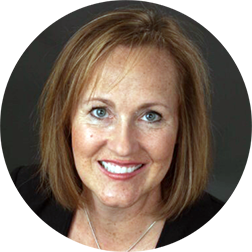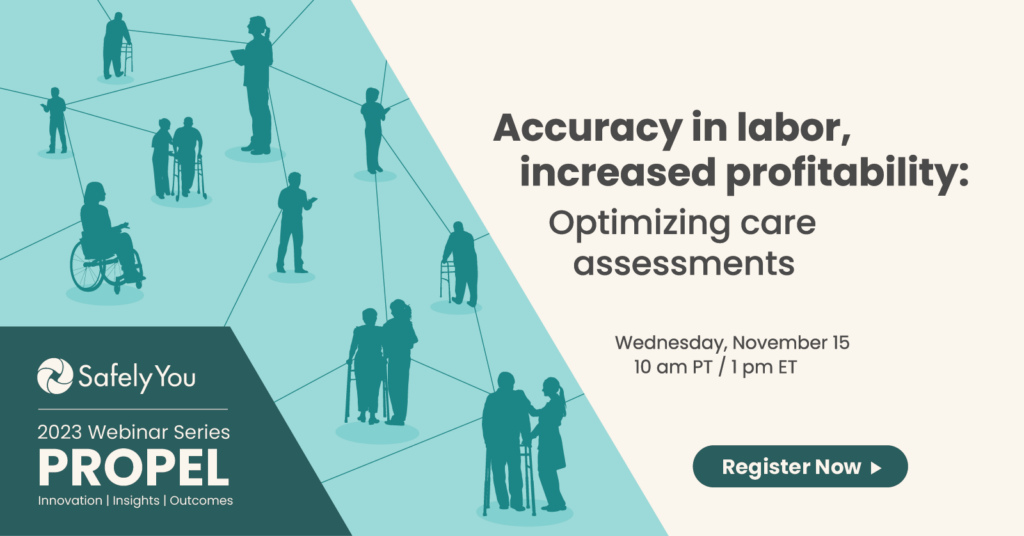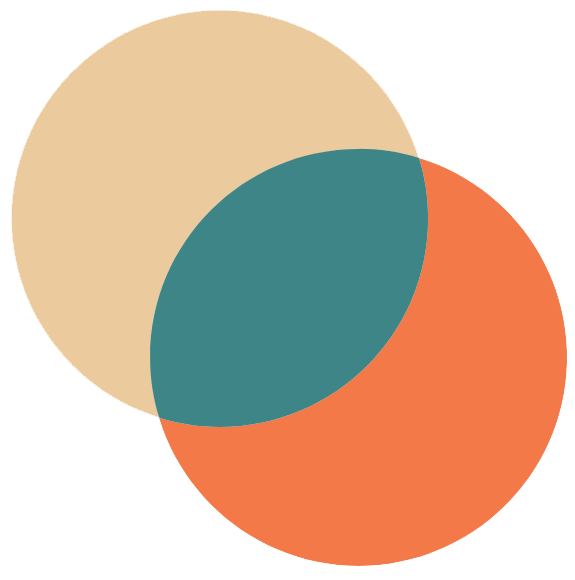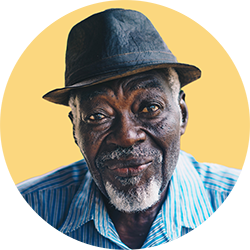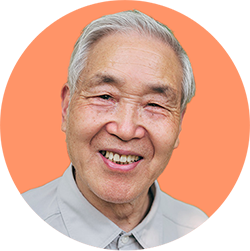Sleep disturbances are a major driver of move-ins to senior living communities. When a loved one consistently has trouble sleeping through the night, families often see a corresponding increase in nighttime incidents. Seeking residential care is a natural next step, and communities that can demonstrate improved sleep and reduced nighttime risk for residents are well-positioned to support these families and increase occupancy. Let’s explore the relationship between dementia, sleep disturbances, and falls—and learn some proven prevention methods.
What Are Sleep Disturbances?
Sleep disturbances encompass a variety of dysfunctions associated with sleep, including:
- Trouble initiating and maintaining sleep
- Excessive somnolence
- Problems with the sleep–wake cycle
- Difficulty with REM sleep
- Sleep apnea
The impacts of sleep disturbance can be severe. For those suffering, sleep dysfunction can lead to worsened physical and mental health.
Causes
Evidence shows that the causes of sleep disturbances are multifactorial, making it important to be familiar with a variety of possible contributing factors, such as:
- Personal factors like sleep schedule, activity level, and circadian rhythm
- Physical factors like pain, hunger, toileting needs, and anxiety
- Environmental factors like comfort level, lighting, temperature, noise, and staff routines
- Medical factors like health comorbidities and medications
Given the diverse set of possible causes, it is critical to identify treatment strategies on an individual basis, catering each care plan to meet the specific needs of the resident.
Sleep Disturbance and Dementia
Those living with dementia are at greater risk for sleep disturbances, and the risk increases as the disease progresses. 25% of those with mild to moderate dementia suffer from sleep disturbance, while 50% of those with severe dementia experience sleep disturbance.
Sleep disruptions have been linked to both the pathophysiology of Alzheimer’s disease and the risk of developing the disease in the future. The causal link is not fully clear, but theories suggest that brain function changes as a result of the dementia disease process. Sleep disorders also contribute to sundowning for those living with dementia, causing late afternoon tiredness and early evening restlessness.
The Link Between Sleep Disturbance and Falls
Research shows that residents across senior care struggle with sleep disturbance. In fact, the latest data from SafelyYou Aware™ indicates that residents are awake or not in their rooms up to 30% of the night. What does that mean for their well-being and care?
Inadequate or low quality sleep contributes to poor overall health in individuals of any age group. Among seniors, especially those with dementia, the physical, metabolic, and mental toll of poor sleep impairs motor and cognitive skills, leading to falls. SafelyYou video data shows increased fall risk at night:
- 65% of falls happen between 7pm and 7am
- 67% of silent falls occur overnight (when residents fall but self-recover, unwitnessed by staff)
- 43% of residents who had one overnight silent fall had a repeat overnight silent fall
In order to address the very real risk of nighttime incidents, it is critical to be aware of the link between sleep quality and falls—and take extra precautions at night to protect residents during vulnerable hours.
Strategies to Prevent Sleep Disruption and Falls
Sleep disruption poses a serious problem for senior living communities. Using a multi-pronged approach addresses the various causes of sleep disturbances and reduces fall risk.
Use Technology for Fall Response and Prevention
The best way to ensure residents are safe through the night is to employ robust technology that can not only detect when a fall occurs, but also provide video and insights to help your community uncover patterns in global and individual resident behavior. Finding these patterns can transform your clinical approach from basic fall response to a culture of fall prevention. This in turn enables and improves many of the strategies reviewed below.
With the launch of SafelyYou Aware™, communities can now get the support of remote safety checks for a clearer picture of resident risk without disrupting critical sleeping time. If a potential risk is detected, staff are alerted and can respond quickly to keep residents safe.
Take Personal Factors Into Account
Residents may have daily routines and interests that do not effectively prepare them for a good night’s sleep—not getting enough sunlight or movement, for example—and some nighttime habits directly impact fall risk. Take reclining chairs, which some residents have slept in for years. While these chairs increase fall risk and best practice would be to remove them from resident rooms, resident choice must be considered and it may not be possible to facilitate changing a long-standing habit like this.
In these cases, mitigate risk by balancing safety with resident preferences:
- Find daytime activities the resident likes that can help tire them out
- Gradually implement new schedules, structured routines, and environmental changes
- Ensure the resident’s reclining chair is as safe as possible to prevent falls when standing up, either by securing the rocking and swivel mechanism or making the reclining function easier to use
- Check regularly on residents who want to be independent and be ready to help if needed
- Position comfort items they might need through the night in easy-to-reach, safe places
- Replace unsafe items, such as large blankets, with safer alternatives that meet the same needs
Address Physical Needs
Understanding and proactively addressing residents’ physical needs can prevent many sleep disturbances and potential for nighttime falls. Create routines that ensure residents can address these critical needs before bed—or safely throughout the night with staff help:
- Assess pain and provide relief
- Calm anxiety and confusion
- Plan for overnight hunger
- Examine toileting frequency, pattern and schedule
Having the right technology on hand can be especially important for addressing physical needs, since many residents living with dementia may not be able to express themselves adequately to staff. With these tools, staff gain better insights into when residents are awake or outside their rooms—and what needs are not being met. With this information, you can plan how to address each issue, whether that be scheduling a nighttime snack for a certain resident or planning on a midnight restroom trip for another.
Create a Safe Sleep Environment
Creating an environment conducive to quality sleep is important for anyone, but this is especially critical for residents with dementia and sleep dysfunction. In general:
- Minimize distractions and maximize comfort and safety
- Pay attention to room design and furniture layout for mobility pathways
- Use a safe bed and well-fitting bedding
- Ensure lighting, temperature, and noise level are comfortable
- Carefully plan staff rounds to minimize the risk of waking sleeping residents
- Place residents’ meaningful items in safe locations so they can access them without risk
Environmental safety is especially important for residents prone to “furniture walking.” For these residents, it’s critical to remove items from the room that are unstable, such as swivel chairs, rocking chairs, chairs with wheels, and reclining chairs. If a resident uses a wheelchair, recommend a model that has an anti-rollback feature, which can prevent the chair from moving when no one is sitting in it.
Monitor Medical Changes
Not all sleep disruption occurs as a result of habits and environment. In some cases, residents may experience sleep trouble as a result of a medical condition. To keep an eye on this, continually monitor for changes in the resident’s medical conditions. Examine the impact of comorbidities and onset of new conditions. Know whether a resident has a condition like high blood pressure or sleep apnea that might impact sleep quality, and continue to monitor these conditions as the resident ages and experiences new symptoms.
Review medications, including the dose, timing, duration, and side effects. For example, maybe medication is wearing off in the middle of the night, causing pain and waking up the resident. This might be addressed by understanding the effective duration of the medicine and adjusting the administration time accordingly to promote quality sleep. It’s also critical to understand the side effects of medications. If a resident takes medicine known to increase urination frequency, it may be necessary to take special care to check in and ensure they have help if they need to get up during the night. In other cases, medications may cause daytime drowsiness or insomnia. Be prepared to address each unique case as it arises.
Address Sleep and Fall Issues to Attract and Retain Residents
Sleep disturbances are all too common among individuals with dementia, but with the right technology, building a strategy to improve resident sleep quality and mitigate nighttime fall risk can result in:
- Improved resident health outcomes
- Fewer injuries and hospitalizations
- Greater peace of mind for families
- Better informed clinical decisions
- Improved retention of staff and residents
Improving sleep and reducing falls is the result of individualized care developed with the help of insights revealed from advanced technology. Ready to explore SafelyYou tech that can enhance your insight into sleep and falls? Learn more about SafelyYou Aware.
About The Author
Wendy Starnes, OTR/L
Clinical Success Manager, SafelyYou
Wendy has over 20 years of experience in the field of occupational therapy, specializing in driver rehabilitation, dementia, and fall reduction. She’s spent five years as an instructional designer and course developer, building skills in providing effective training to adult learners. Wendy feels a very personal connection to SafelyYou and its mission, as she had a grandmother she was very close to who suffered a number of falls. When she’s not helping to improve the lives of older adults, you can find Wendy on a culinary or other adventure.
